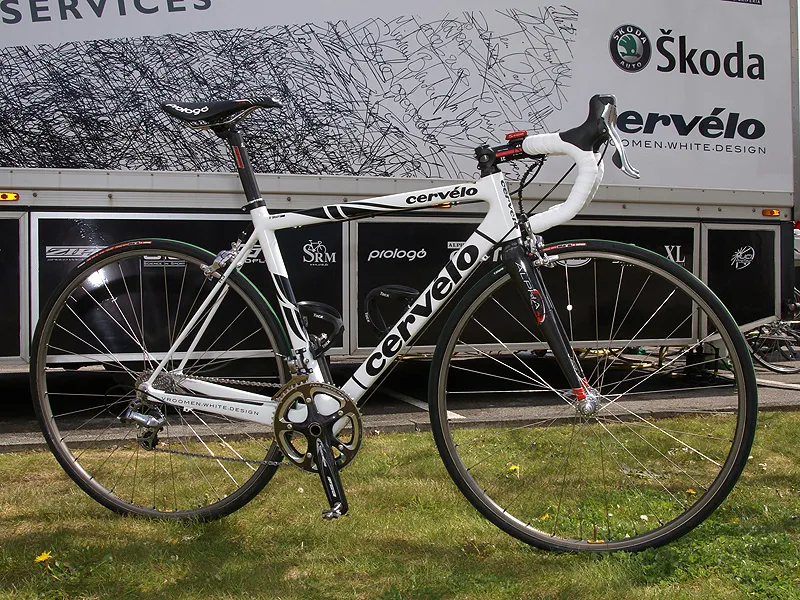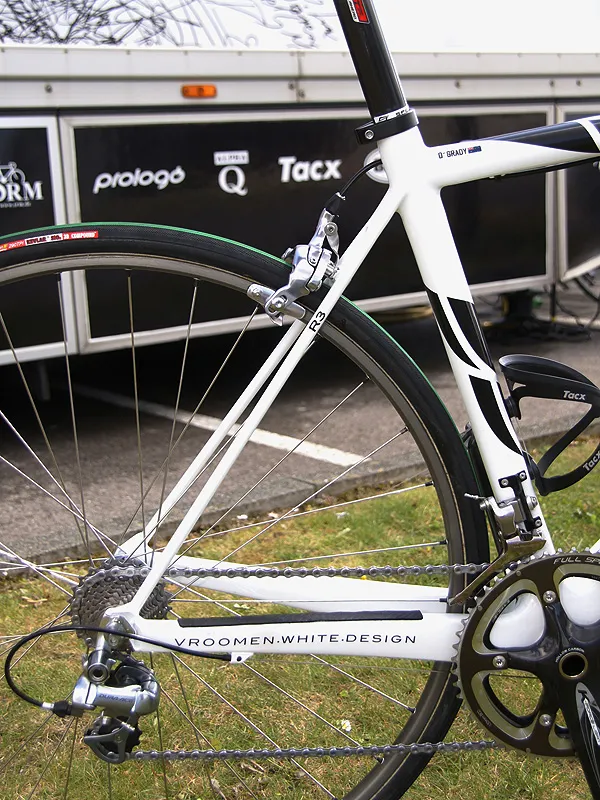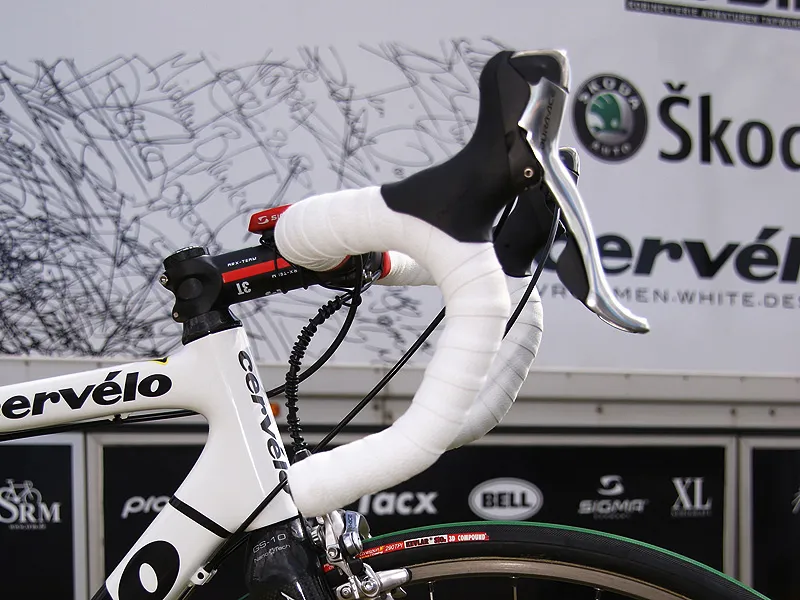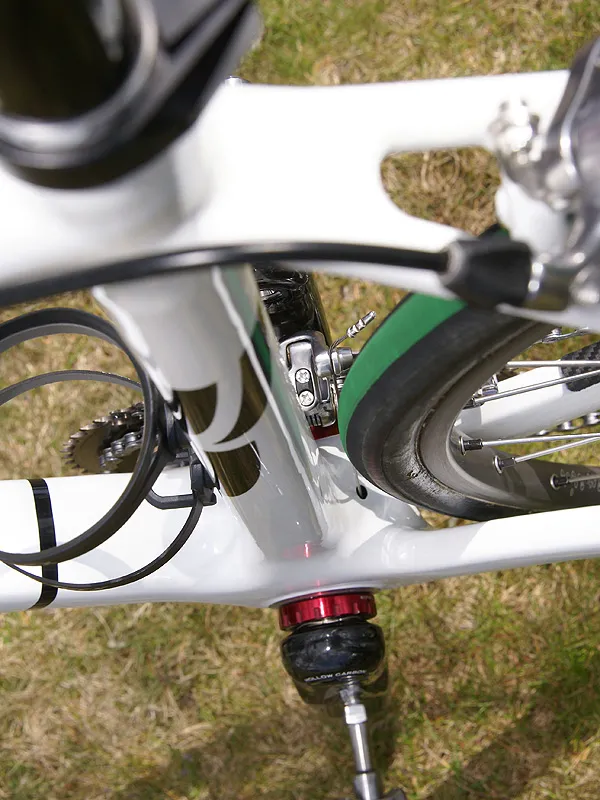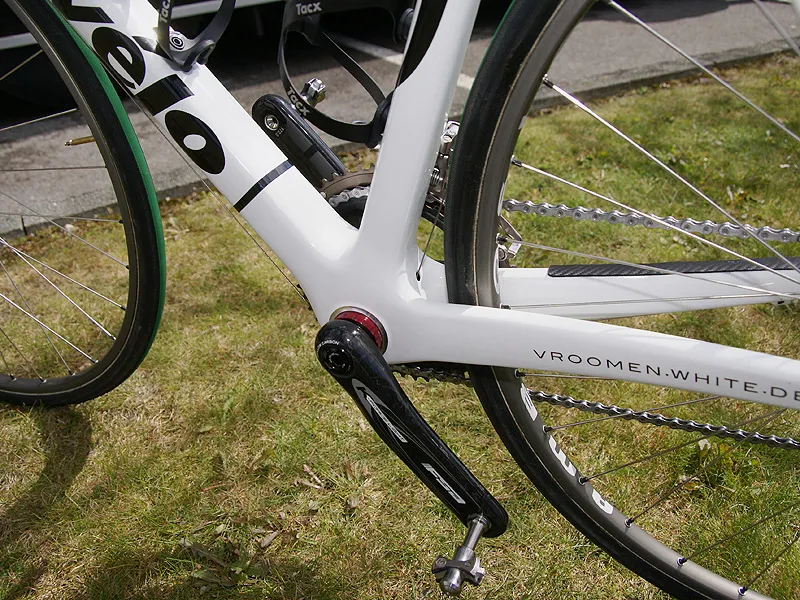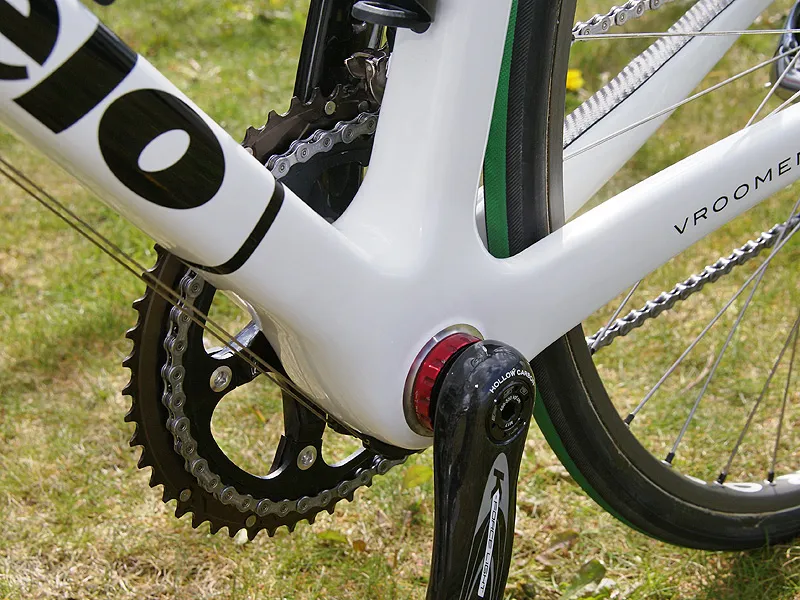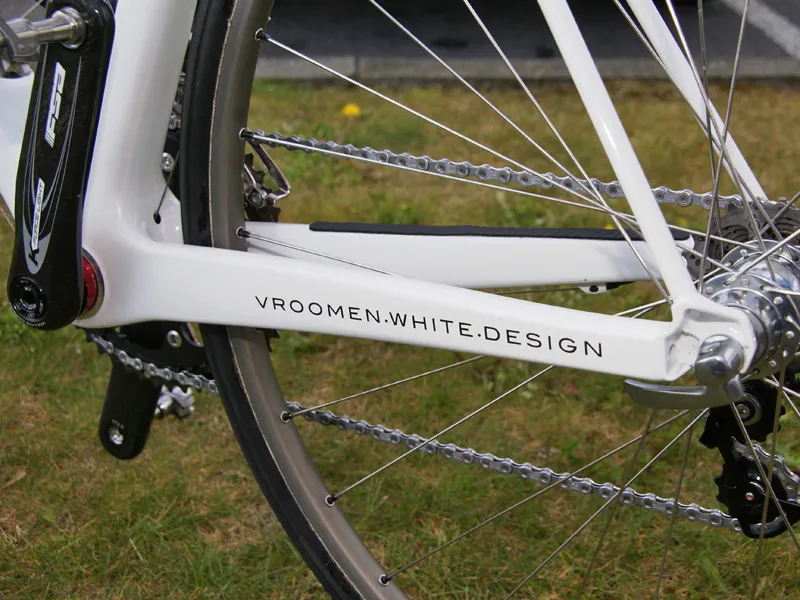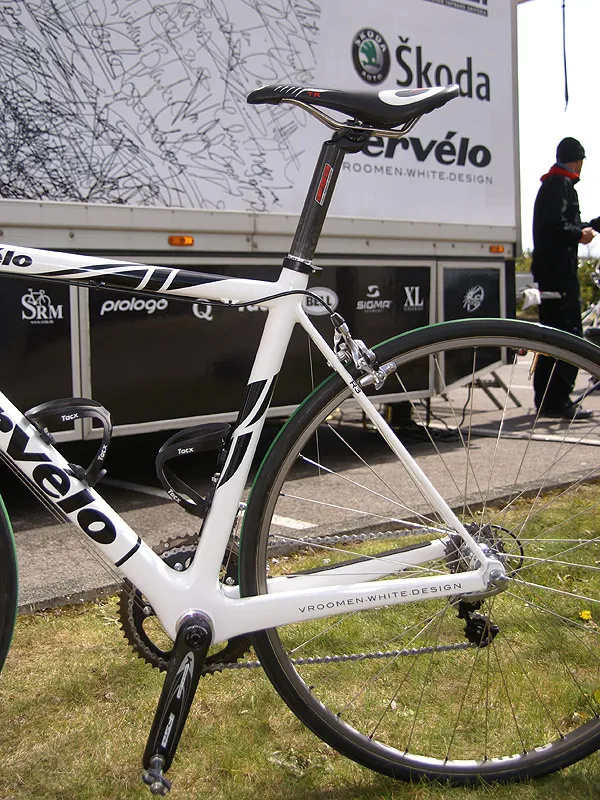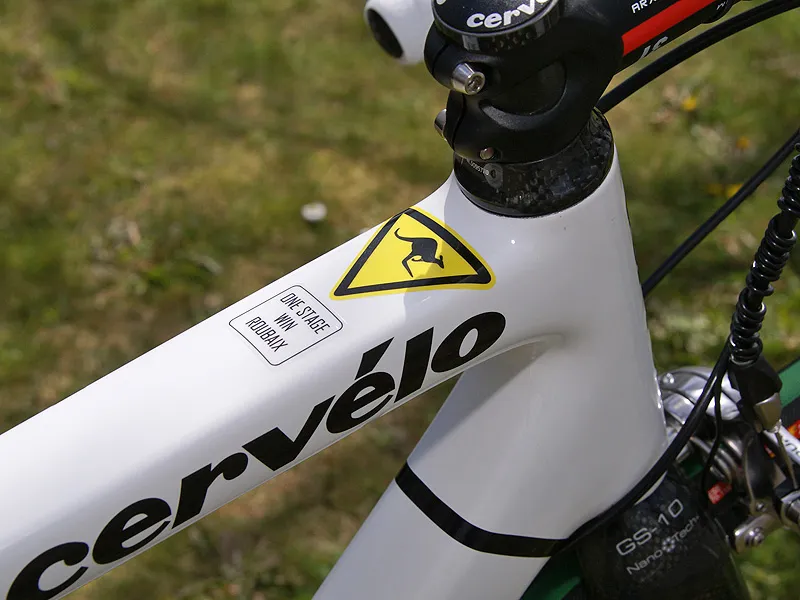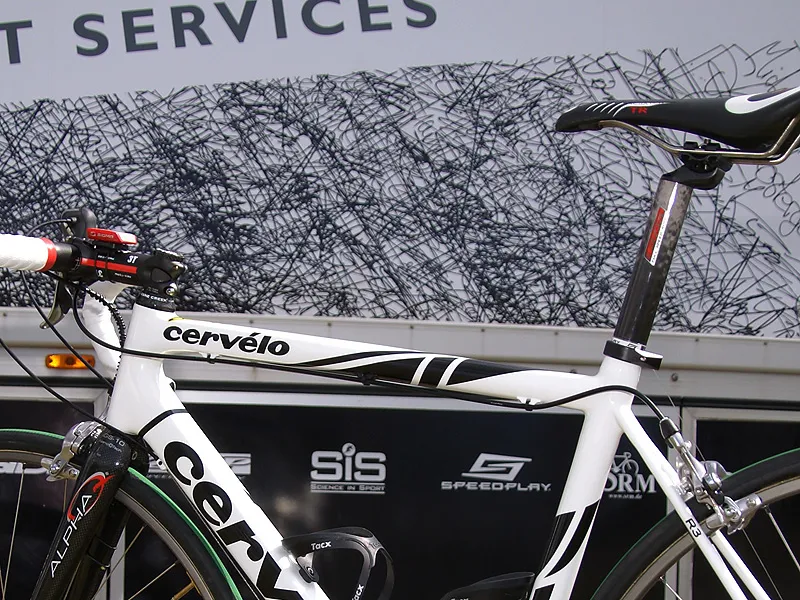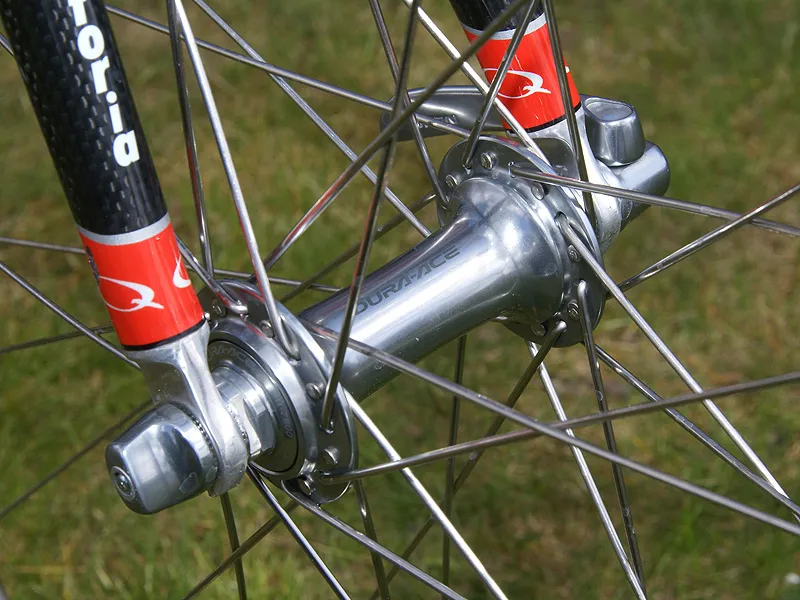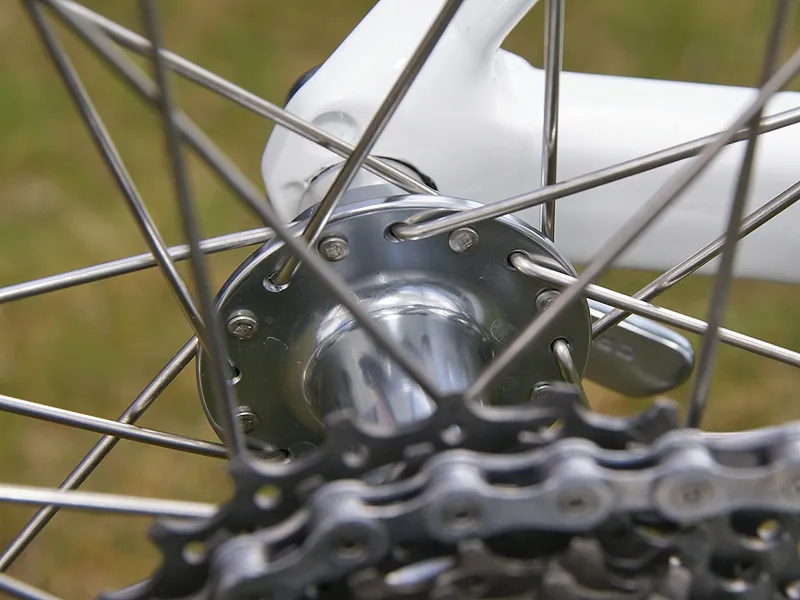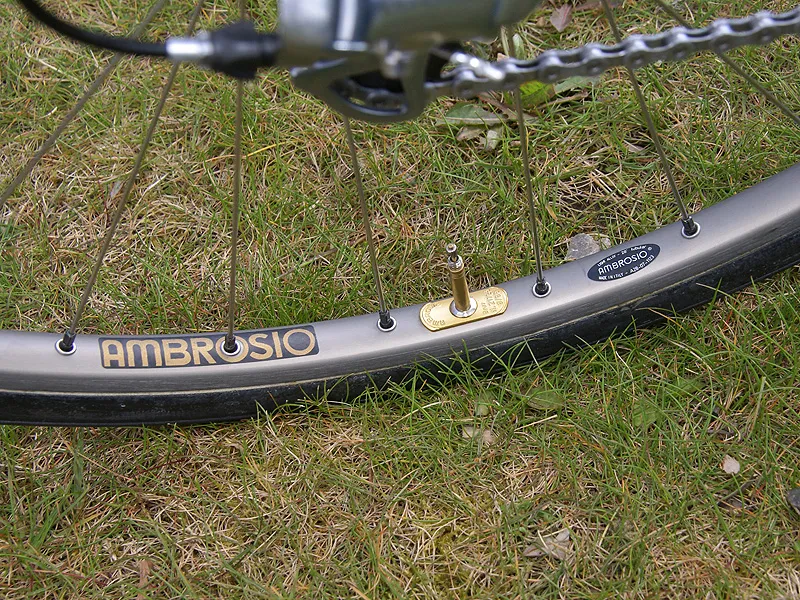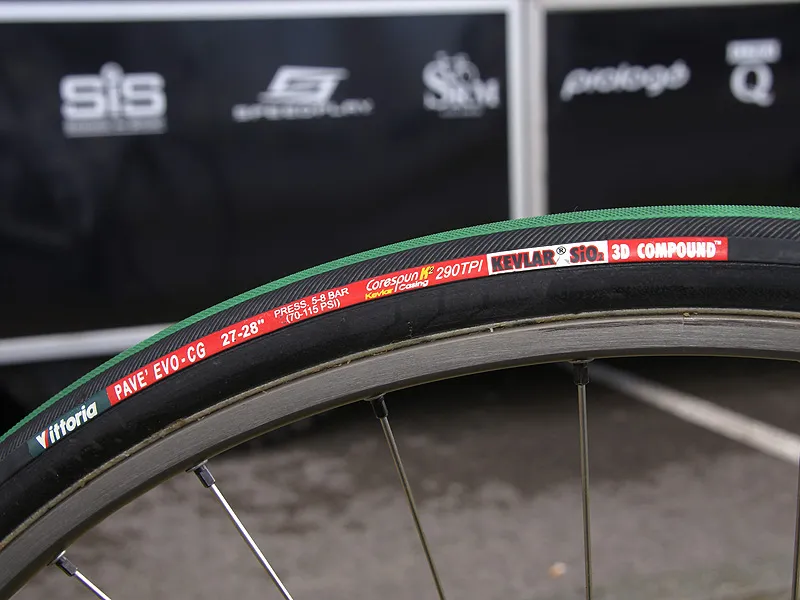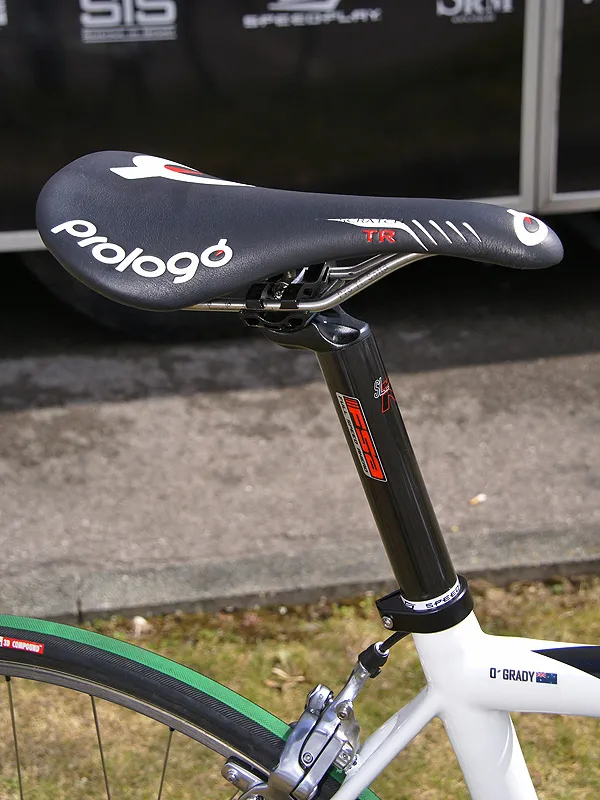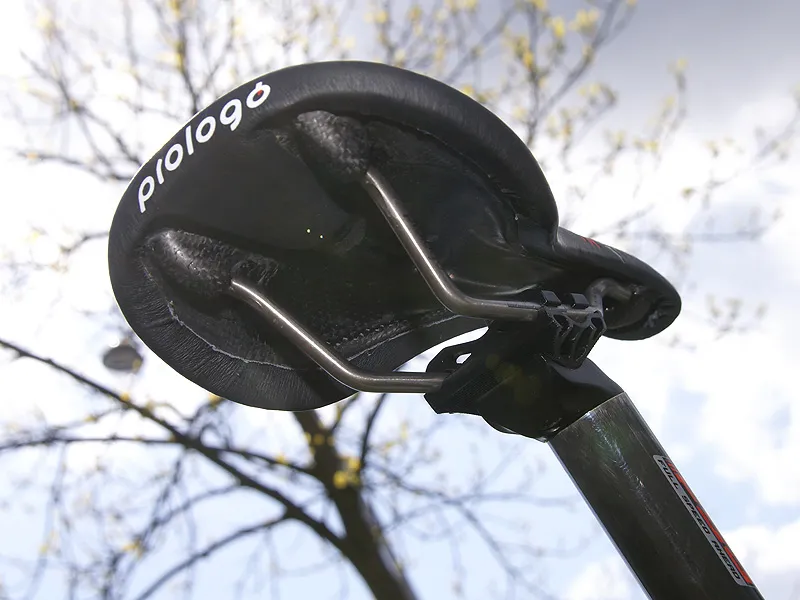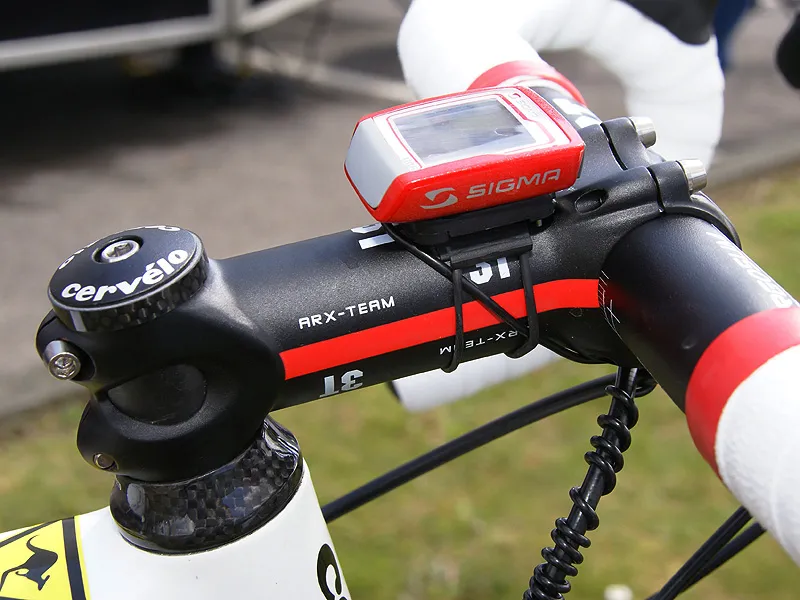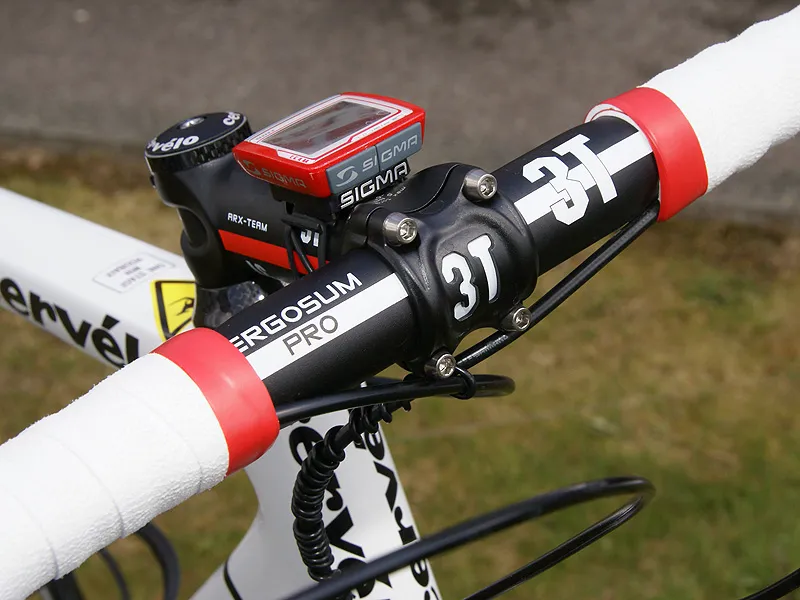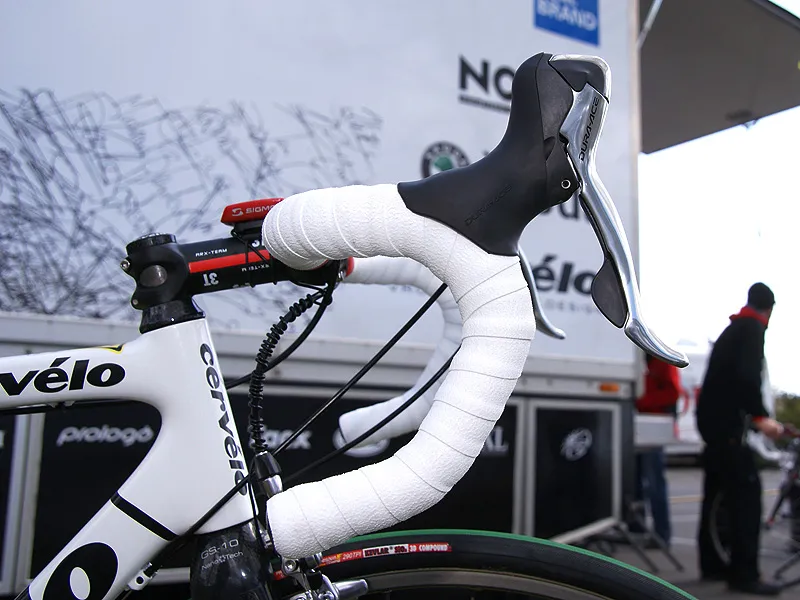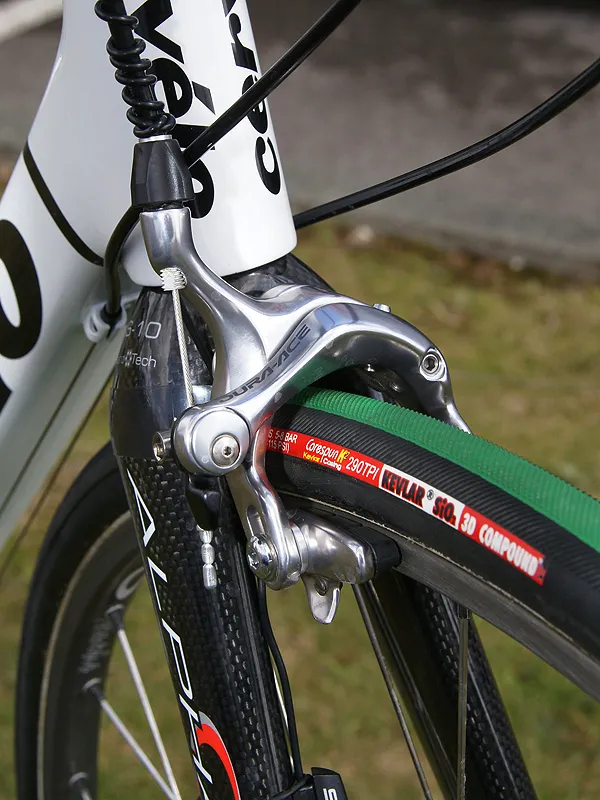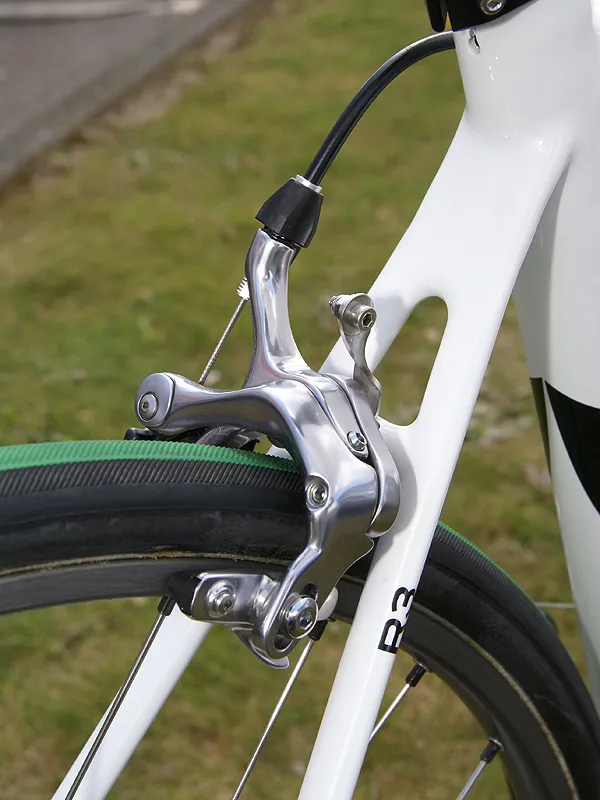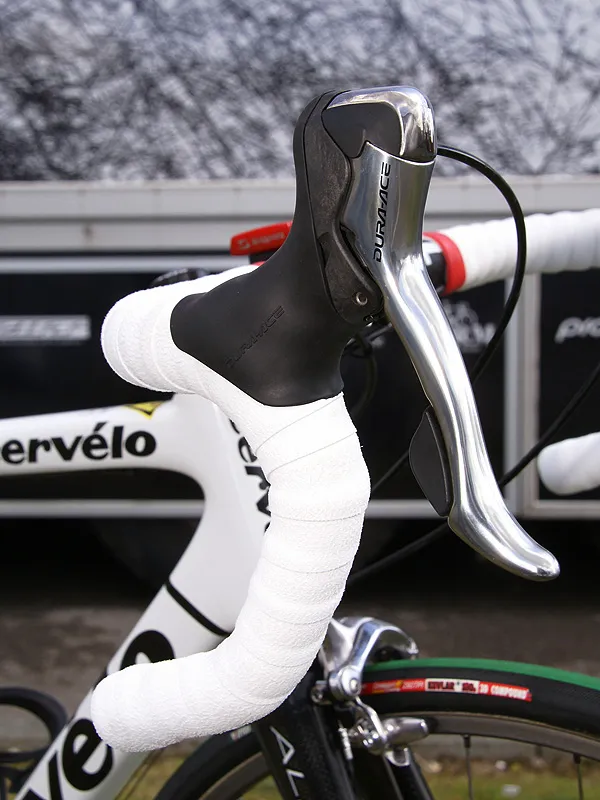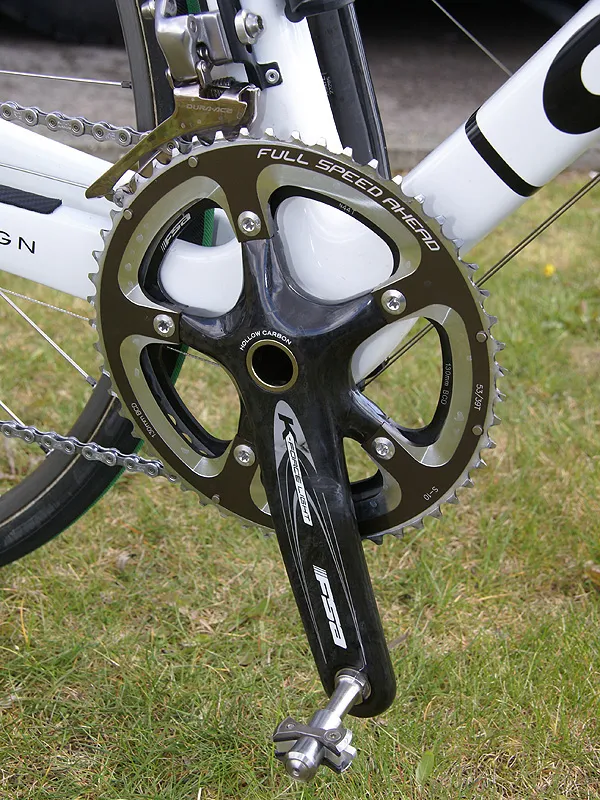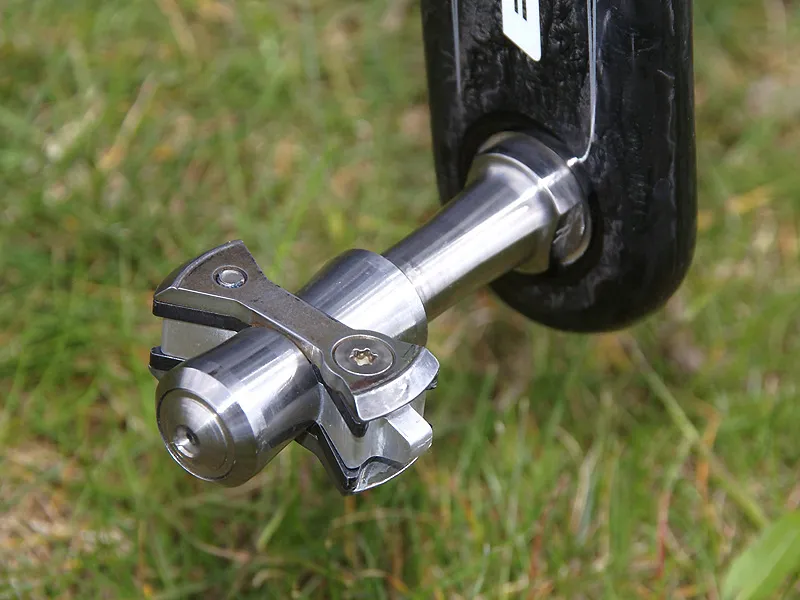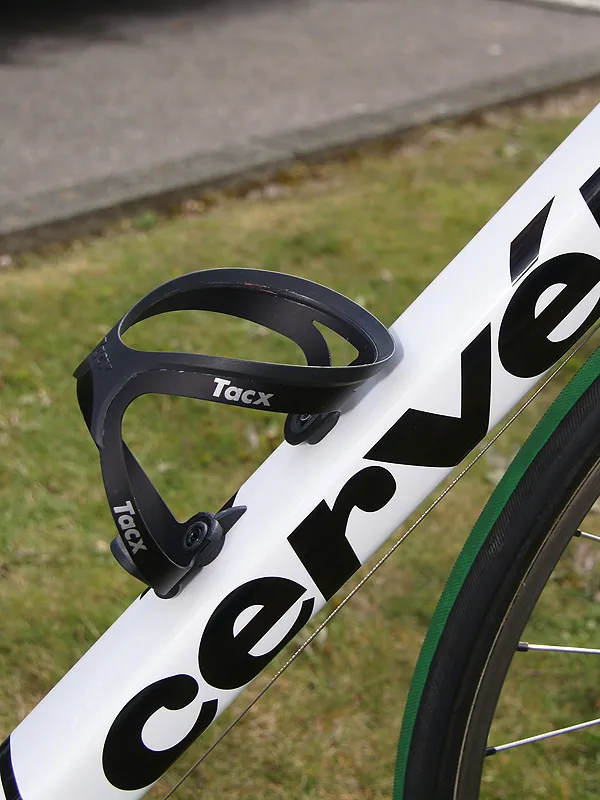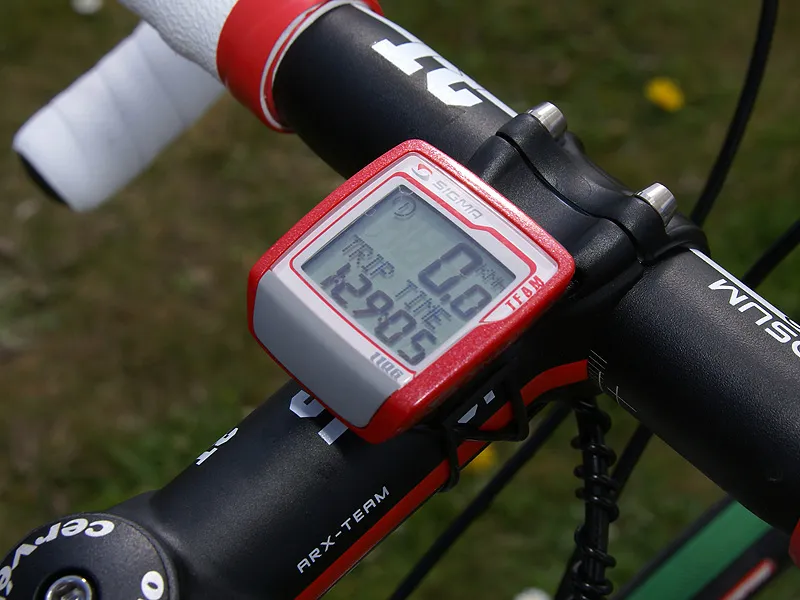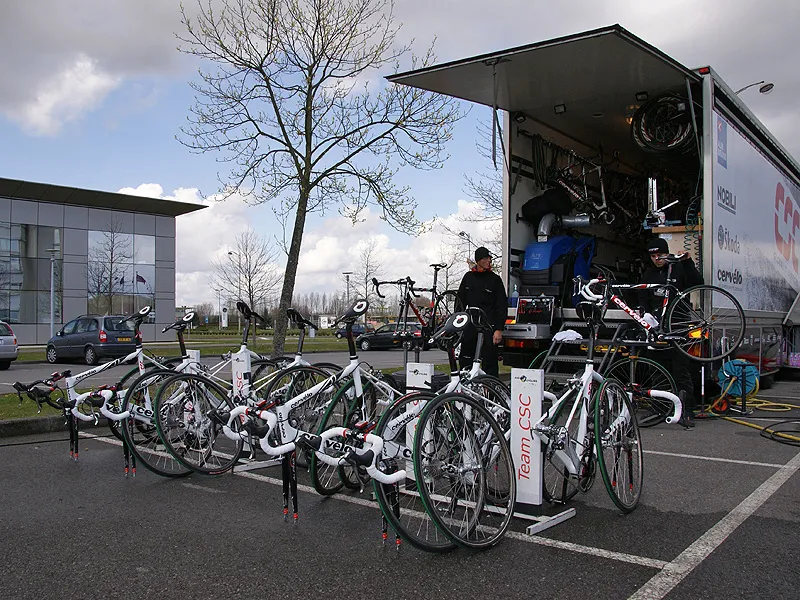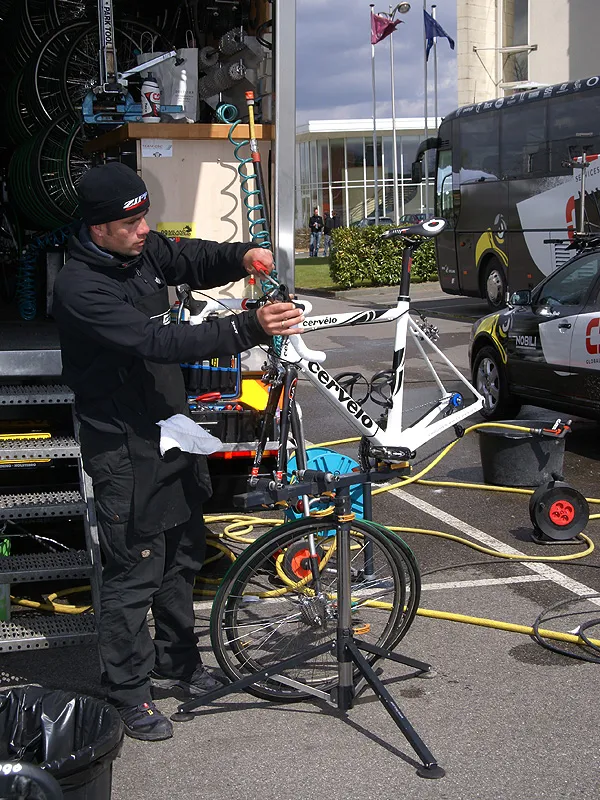While many other teams resorted to new, and often unorthodox, creations at this year's Paris-Roubaix, Team CSC went with a time-tested setup in its quest for a third consecutive cobblestone trophy. The team couldn't quite pull off the win in the end, but their only slightly modified Cervélo R3 machines proved themselves once again.
O'Grady's Cervélo R3 was a near carbon copy of the bike that carried him to victory at last year's queen of the classics with only minor changes in componentry. Just as before, the frame's rear end was extended by 1cm to deliver a slightly smoother ride and more stable handling. Rake on the accompanying Alpha Q GS-10 fork was similarly increased to 50mm to retain overall weight balance front-to-rear but otherwise there were no special concessions made to increase tyre clearances at either end.
Some of this consistency may have to do with the frame's built-in design attributes: the front triangle and chain stays are appropriately massive for snappy reflexes but, as always, the R3 seat stays are almost impossibly spindly for a smoother ride over the cobbles.
Much of last year's equipment carried over as well, including the traditional box-section tubular rims laced to standard Dura-Ace hubs front and rear with stainless steel spokes in a three-cross pattern. Nearly all of the remaining componentry wore the Dura-Ace badge as well, save for the carbon FSA carbon crankset, and Vittoria once again provided the corresponding 27mm-wide tubular rubber. Pedals were the familiar specially modified Zeros from Speedplay.
In fact, virtually nothing on O'Grady's bike was new relative to 2007. Lone exceptions included a new Scratch TR carbon-shelled saddle from Prologo and the ARX Team stem and Ergosum Pro bar from new sponsor 3T (although the shape of the latter bore a striking resemblance to O'Grady's FSA bar from last year).
Call it boring or unimaginative if you like but O'Grady's Cervélo was one of the lightest Paris-Roubaix bikes we handled; actual weight was just 7.5kg (16.5lb). Regardless, the results speak for themselves. O'Grady ended up in fifth place only nine months after his horrific crash at last year's Tour de France and 2007 Paris-Roubaix winner Fabian Cancellara continued his incredibly successful spring campaign only one step down from Quick Step's Tom Boonen.
Was CSC's Cervélo R3 rerun boring and unimaginative? Perhaps, but it was also undeniably effective.
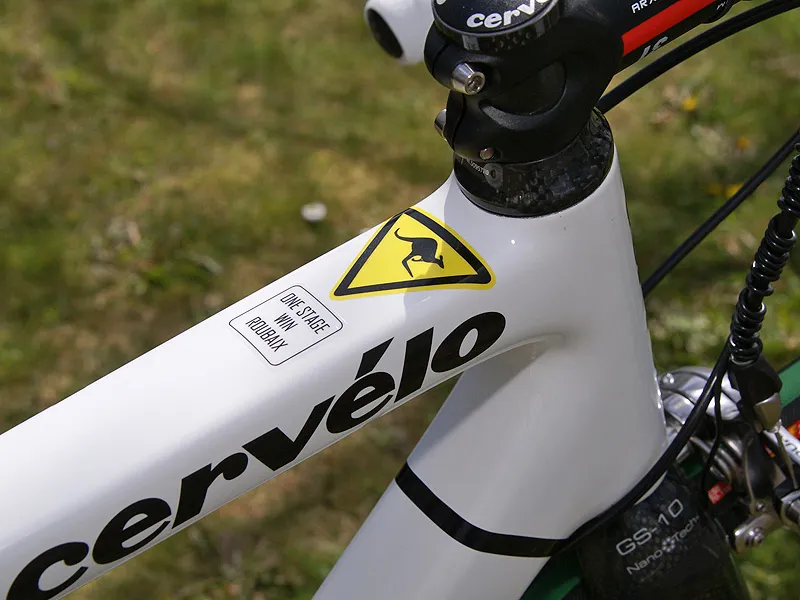
Full specification
Critical measurements
